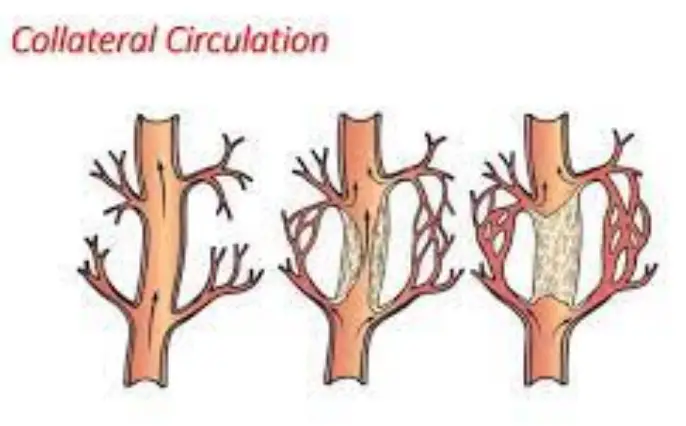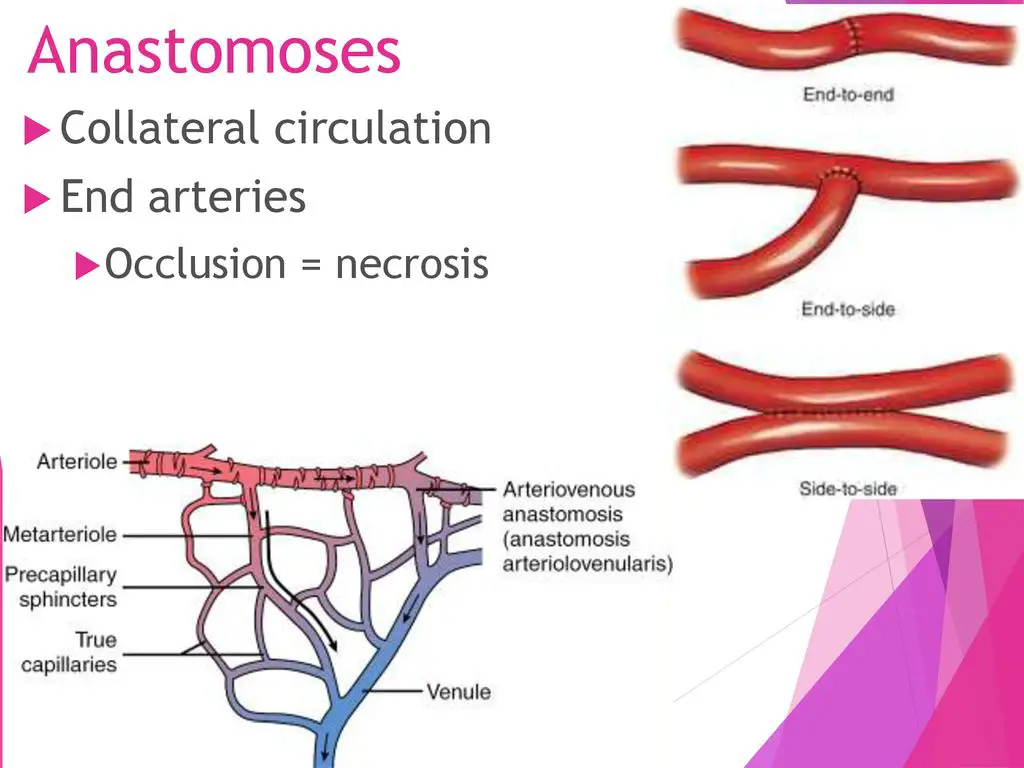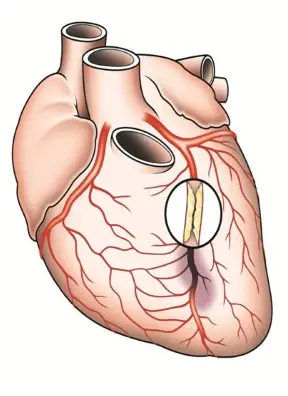The human body boasts a complex network of blood vessels that ensure the continuous flow of blood, supplying organs and tissues with essential nutrients and oxygen. Among these vascular structures, anastomosis and collateral circulation stand out due to their critical roles in maintaining circulatory health and adaptability. These terms are often mentioned in medical texts but seldom explained in accessible language.
Anastomosis refers to the connection between two vessels that allows blood to flow from one to another, bypassing the usual route, whereas collateral circulation involves alternative pathways that blood can take around a blocked artery or vein. Understanding these concepts is crucial for appreciating how the body protects itself against vascular blockages and injuries.
While anastomosis typically forms naturally or as part of a surgical outcome, collateral circulation develops mostly in response to gradual changes like those seen in arterial blockage. Both mechanisms serve as vital adaptive responses to ensure survival by maintaining an adequate blood supply even when primary routes are compromised.

Anatomy Explained
The human circulatory system is a marvel of biological engineering, with several mechanisms designed to maintain blood flow even during adverse conditions. Two such mechanisms, anastomosis and collateral circulation, play critical roles. Understanding their anatomy and functions can provide insight into how the body copes with potential circulatory challenges.
What is Anastomosis?
Anastomosis occurs when two blood streams merge or connect, either naturally or through surgical intervention. This can happen between veins, arteries, or between an artery and a vein. Here are a few key points about anastomosis:
- Natural Connections: These are often found in the brain, where arterial rings are formed to ensure blood supply despite blockages.
- Surgical Connections: In procedures like coronary artery bypass surgery, surgeons create anastomoses to redirect blood flow around clogged arteries.
- Benefits: The primary benefit of anastomosis is its ability to provide alternative pathways for blood flow, enhancing tissue viability.
What is Collateral Circulation?
Collateral circulation is the alternative route of blood flow that develops when the main vessels are obstructed. It involves smaller, often capillary-sized vessels which, although not originally intended for significant blood transport, can enlarge and become capable of carrying significant volumes of blood. Key aspects include:
- Triggered by Need: Typically develops in response to chronic vascular blockages, such as those caused by atherosclerosis.
- Adaptive Mechanism: Acts as a natural bypass system within the body.
- Protective Role: Supports tissue survival during arterial blockages by providing a secondary circulation network.
Key Differences
Understanding the distinctions between anastomosis and collateral circulation is vital for comprehending their respective impacts on health.
Pathways of Blood Flow
- Anastomosis: Directly connects two segments of the vascular system, allowing blood to flow from one to the other without passing through the intermediate capillary system.
- Collateral Circulation: Involves a network of smaller blood vessels that expand and mature to reroute blood around a blockage, often over a longer distance.
Physiological Roles
- Anastomosis: Primarily serves to preserve blood flow in an area potentially compromised by blockage or surgical interruption.
- Collateral Circulation: Works as a long-term adaptation to chronic vascular blockages, improving the blood supply to affected areas gradually.
Contexts of Occurrence
- Anastomosis: Can occur naturally in certain organs or as a result of surgical intervention aimed at restoring blood flow.
- Collateral Circulation: Most commonly develops in response to progressive diseases like coronary or peripheral artery disease.
Medical Significance
The roles of anastomosis and collateral circulation are pivotal in both health and disease contexts, influencing treatment strategies and outcomes.
Role in Health
- Anastomosis: Enhances the robustness of the circulatory network, providing crucial redundancy that can be lifesaving in cases of sudden arterial blockages.
- Collateral Circulation: Improves tissue viability and organ function in gradual vascular occlusions, mitigating potential damage over time.
Role in Disease
- Anastomosis: Can be therapeutically created to bypass diseased or blocked segments of the vascular system, especially important in heart and peripheral artery diseases.
- Collateral Circulation: Offers a compensatory mechanism in chronic vascular diseases, allowing the body to adapt to reduced blood flow and maintain organ function.

Clinical Perspectives
The clinical implications of anastomosis and collateral circulation are vast, impacting the detection, diagnosis, and treatment of various vascular diseases. These physiological phenomena not only facilitate the understanding of blood flow mechanics but also guide medical interventions.
Detection and Diagnosis
Detecting and diagnosing issues related to anastomosis and collateral circulation require sophisticated medical tools and techniques. Here’s how medical professionals typically approach these tasks:
- Imaging Techniques: Advanced imaging technologies like MRI (Magnetic Resonance Imaging), CT (Computed Tomography) scans, and Doppler ultrasound are pivotal. These modalities allow clinicians to visualize the vascular architecture, identify anastomoses, and assess the functionality of collateral circulations.
- Angiography: Considered the gold standard for examining blood vessels, angiography provides a detailed view of blood flow patterns and blockages, revealing both natural and surgically created anastomoses.
- Physiological Tests: Functional assessments, such as stress tests or measurements of tissue oxygenation, help evaluate the effectiveness of collateral circulation, particularly in patients with chronic arterial blockages.
Treatment Approaches
Treatment strategies that leverage the concepts of anastomosis and collateral circulation are vital in managing various cardiovascular and peripheral vascular diseases. Effective treatment approaches include:
- Surgical Intervention: Procedures like bypass surgery rely on creating anastomoses to divert blood around blocked arteries, significantly improving blood flow to heart muscles or peripheral regions.
- Angioplasty and Stenting: These procedures can help open blocked arteries and promote the development of collateral circulation, enhancing blood supply to the affected areas.
- Pharmacological Therapy: Medications that improve blood flow or modify clotting mechanisms can also support the development of collateral circulation, reducing the risk of severe ischemic events.
Recent Research
The field of vascular biology is constantly evolving, with recent research shedding light on how anastomosis and collateral circulation can be manipulated or enhanced to improve clinical outcomes.
Innovations in Study
Recent innovations in the study of vascular networks include:
- Genetic Research: Studies focusing on the genetic basis of collateral vessel development have begun to identify specific genes that influence this process. This research could lead to genetic therapies that enhance collateral circulation development in at-risk populations.
- Regenerative Medicine: Stem cell therapy and tissue engineering are promising areas that could potentially be used to create new vascular connections or enhance existing ones, improving tissue viability post-injury or in disease states.
Implications of Findings
The implications of recent findings in vascular research are profound:
- Improved Risk Assessment: Understanding the genetic and environmental factors that influence the development of collateral circulation could lead to better risk stratification in patients with vascular diseases.
- Tailored Therapies: With advances in genetic and regenerative technologies, it might become possible to tailor treatments based on an individual’s genetic makeup or specific circulatory needs, optimizing the outcomes.
- Enhanced Recovery Protocols: Incorporating knowledge about anastomosis and collateral circulation into post-operative care could improve recovery times and outcomes in patients undergoing vascular surgeries.
Frequently Asked Questions
What is Anastomosis?
Anastomosis is a connection between two blood vessels that allows blood to flow from one to another. This connection can occur naturally within the body or can be surgically created to bypass blocked or damaged vessels, facilitating blood flow to critical areas.
How Does Collateral Circulation Work?
Collateral circulation involves the development of a network of tiny blood vessels that form around a blocked or narrowed main vessel. This network allows blood to detour around the blockage, ensuring that blood continues to reach vital organs and tissues.
Why is Collateral Circulation Important?
Collateral circulation is crucial in conditions where blood flow is hindered by blockages, such as in coronary artery disease. It can preserve heart function and prevent heart attacks by providing an alternative route for blood flow.
Can Anastomosis Occur After Surgery?
Yes, anastomosis is often a goal during surgical procedures involving the blood vessels, such as in coronary artery bypass surgery. Surgeons create these connections deliberately to reroute blood flow away from diseased or blocked arteries.
Conclusion
In conclusion, anastomosis and collateral circulation are fundamental components of the vascular system, playing indispensable roles in health and disease. They embody the body’s innate ability to adapt to challenges such as blockages or injuries by providing alternative pathways for blood flow.
Understanding these processes enhances our appreciation for the sophisticated mechanisms at work within our bodies and underscores the importance of vascular health. As research continues, the knowledge of how these systems function will likely lead to improved treatments for cardiovascular diseases and better surgical outcomes.

